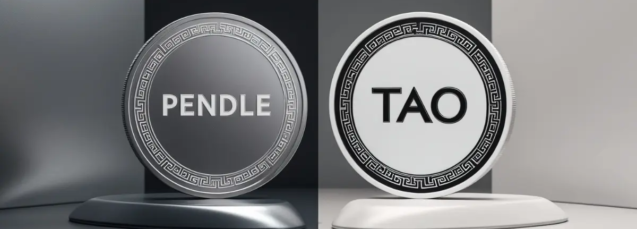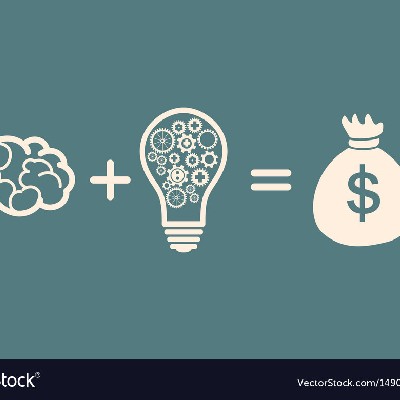
Coin-related
Price calculator
Price history
Price prediction
Technical analysis
Coin buying guide
Crypto category
Profit calculator

Ethereum priceETH
How do you feel about Ethereum today?
Price of Ethereum today
What is the highest price of ETH?
What is the lowest price of ETH?
Why does the price of ETH always fluctuate? What factors affect the performance of ETH prices?
Ethereum price prediction
When is a good time to buy ETH? Should I buy or sell ETH now?
What will the price of ETH be in 2026?
What will the price of ETH be in 2031?
Ethereum price history (USD)
 Lowest price
Lowest price Highest price
Highest price 
Ethereum market information
Ethereum market
Ethereum holdings
Ethereum holdings distribution matrix
Ethereum holdings by concentration
Ethereum addresses by time held

Ethereum ratings
About Ethereum (ETH)
Ethereum is the second-generation blockchain that enables the creation and operation of decentralized applications (dApps) and smart contracts . Conceived in 2015 by Vitalik Buterin, it's best known for bringing smart contracts into the world of blockchain. The cost of every transaction and smart contract execution on Ethereum is measured in gas.
With the largest ecosystem of dApps, Ethereum also serves as the backbone for many Layer 2 solutions, such as Arbitrum and Polygon , which provide faster and cheaper transaction processing.
What is Ethereum (ETH)?
Ethereum is the second-largest cryptocurrency by market capitalization , following Bitcoin. It was developed by Russian-Canadian programmer Vitalik Buterin and officially launched on July 30, 2015. Ether, the native cryptocurrency of Ethereum, powers the ecosystem by enabling transactions, executing smart contracts, and compensating nodes for computational resources. Gwei is a smaller unit of Ether, with one Gwei equal to 0.000000001 ETH (one billionth of an ETH).
Ethereum was launched through an Initial Coin Offering (ICO) between July 22 and September 2, 2014. During the ICO, participants could buy Ether (ETH) with Bitcoin (BTC) at a rate of 2000 ETH per BTC—about $0.31 per ETH. The ICO raised over $18 million, making it one of the most successful fundraising events in the cryptocurrency world. Since its inception, Ethereum has provided a decentralized network for developers and users to build and interact with blockchain-based applications without reliance on centralized intermediaries.
Who founded the Ethereum blockchain?
Ethereum had eight co-founders:
• Vitalik Buterin – The primary visionary who authored Ethereum's whitepaper.
• Gavin Wood – Wrote the Yellow Paper and created the Solidity programming language.
• Joseph Lubin – Founder of ConsenSys, a blockchain technology company.
• Anthony Di Iorio – An early investor in Ethereum.
• Mihai Alisie – Helped establish the Ethereum Foundation.
• Amir Chetrit – An early contributor who later stepped back from the project.
• Charles Hoskinson – Co-founder of Ethereum who later founded the Cardano blockchain.
• Jeffrey Wilcke – A key developer behind Go Ethereum (Geth).
As of 2024, Vitalik Buterin is the only co-founder still actively working on Ethereum. The others have moved on to lead or create new blockchain ventures.
History of Ethereum
2013: Vitalik Buterin, who was a co-founder of Bitcoin Magazine, proposed Ethereum. He envisioned a blockchain platform for decentralized applications (dApps) powered by smart contracts.
2014: Ethereum was announced at the North American Bitcoin Conference. Its Initial Coin Offering (ICO) raised over $18 million.
2015: Ethereum launched its first live version, Frontier, on July 30, enabling developers to build dApps.
2016: Ethereum underwent its first upgrade, Homestead, and faced the DAO hack, leading to a hard fork that split the network into Ethereum (ETH) and Ethereum Classic (ETC).
2017: The Byzantium upgrade improved privacy and scalability with nine Ethereum Improvement Proposals (EIPs).
2019: The Constantinople and Istanbul upgrades optimized gas costs, increased interoperability, and enhanced zero-knowledge proof efficiency.
2020: Ethereum launched the Beacon Chain, introducing Proof-of-Stake (PoS) as part of the Ethereum 2.0 roadmap.
2021: The Berlin and London Hard Fork upgrades optimized fees and introduced EIP-1559, burning a portion of transaction fees.
2022: Ethereum transitioned to PoS with The Merge on September 15, reducing energy consumption by ~99.95%.
2023: The Shanghai and Capella upgrades enabled staked ETH withdrawals and optimized PoS processes.
2024: Ethereum continues to focus on scaling solutions, such as sharding, to improve transaction speed and reduce costs.
How Ethereum works
Ethereum is a decentralized, open-source blockchain platform where developers can create and run smart contracts—self-executing programs that power a wide range of decentralized applications (dApps). It operates on a global network of computers (nodes) that process transactions and record them on the blockchain, ensuring security and transparency. Ethereum's native cryptocurrency, Ether (ETH), is used to pay gas fees for transactions, run smart contracts, and support the network through staking.
After Ethereum transitioned to Proof-of-Stake (PoS) in 2022, validators replaced miners to secure the network. To become a validator, you need to stake 32 ETH, which is locked to help maintain the network's security and efficiency. In return, validators earn incentives for verifying and adding new blocks.
What makes Ethereum unique?
With over a million tokens built on its blockchain and billions of dollars flowing through decentralized applications (dApps), Ethereum has redefined the possibilities of blockchain technology. It supports ERC-20 tokens like USDT, LINK, and BNB, many of which rank among the top cryptocurrencies by market capitalization. Ethereum also powers the thriving non-fungible token (NFT) market, enabling unique digital assets in gaming, art, and more. The EIP-1559 upgrade added a deflationary element to its ecosystem by burning a portion of gas fees, further strengthening its economic model.
With global interest reflected in trading pairs like ETH to USD and ETH to EUR, Ethereum continues to lead the way in shaping the future of blockchain.
What is the next Ethereum upgrade?
What is the Ethereum 2.0 upgrade?
Ethereum 2.0 is a major upgrade to the Ethereum blockchain, launched in phases starting with the Beacon Chain in December 2020. The most notable change was the transition from Proof-of-Work (PoW) to Proof-of-Stake (PoS) in The Merge, completed in September 2022. This shift significantly reduced energy consumption and improved the network's security.
Ethereum Pectra upgrade
The next major Ethereum upgrade, Prague-Electra (Pectra), is set for early 2025. It will enhance scalability, efficiency, and usability through key features like batch transactions (EIP-3074), increased staking limits (EIP-7251), and reduced node storage via Verkle Trees (EIP-2935). Learn more about the Pectra Upgrade and how it will improve your Ethereum experience.
Does Ethereum upgrade affect ETH's price?
Ethereum upgrades can influence ETH's price, but the effect is not always straightforward. Significant upgrades, like The Merge in 2022, tend to generate market interest and can lead to price fluctuations, including changes in the Ethereum live price. These upgrades aim to improve the network's scalability, security, and energy efficiency, which can be seen as positive developments for the long-term outlook of Ethereum. However, price changes are also influenced by other factors, such as broader market conditions and investor sentiment, so the impact of upgrades on ETH's price is not always predictable.
For real-time insights, many traders track ETH's current price along with Ethereum charts to better understand short-term fluctuations and market behavior.
What are potential use cases for Ethereum?
Ethereum enables a variety of use cases due to its flexibility and decentralized nature:
• Decentralized Finance (DeFi): Financial services without intermediaries (e.g., lending, exchanges).
• Smart contracts: Automated agreements in industries like insurance, real estate, and legal.
• Non-Fungible Tokens (NFTs): Digital ownership in art, collectibles, and media.
• Decentralized Autonomous Organizations (DAO): Community-governed organizations.
• Supply chain management: Transparent tracking of goods and verification of authenticity.
• Gaming: Play-to-Earn (P2E) models and tokenized assets in games.
• Identity verification: Secure management of digital identities and personal data.
Where can I stay updated on Ethereum news?
If you're looking for the latest Ethereum updates and crypto news, Bitget has you covered. Bitget News keeps you informed with real-time updates, market trends, and all the latest happenings in the crypto world
Ready to learn more? Bitget Academy is the perfect place, offering simple guides, trading tips, and insights for both beginners and experienced traders.
What's next for Ethereum?
Looking ahead, Ethereum's development continues with a focus on improving scalability, security, and decentralization:
• Sharding – A major update that will split Ethereum into smaller pieces (shards) to process transactions in parallel, increasing speed and lowering fees.
• Layer 2 Solutions – Technologies like Optimism and Arbitrum will continue to reduce transaction costs and improve scalability.
• EIP-4844 (Proto-Danksharding) – This will introduce new transaction types to further reduce gas fees and enhance data availability.
• EVM Improvements – Enhancements to the Ethereum Virtual Machine will boost performance and support more complex applications.
• PoS Optimizations – Ongoing improvements to Ethereum's Proof-of-Stake system will increase security, decentralization, and staking incentives.
Start investing by accessing the Ethereum trading page on Bitget . Ethereum's price is updated and available in real-time on Bitget.
ETH to local currency
- 1
- 2
- 3
- 4
- 5
How to buy Ethereum(ETH)

Create Your Free Bitget Account

Verify Your Account

Convert Ethereum to ETH
Trade ETH perpetual futures
After having successfully signed up on Bitget and purchased USDT or ETH tokens, you can start trading derivatives, including ETH futures and margin trading to increase your income.
The current price of ETH is $1,819.77, with a 24h price change of -0.49%. Traders can profit by either going long or short onETH futures.
Join ETH copy trading by following elite traders.
Ethereum news




Buy more
FAQ
What is the price of Ethereum today?
How much is one Ethereum (ETH) worth?
When did Ethereum start?
Bitcoin vs. Ethereum: Which is the better buy?
What is the total token supply of Ethereum?
What is the price prediction for Ethereum in 2025?
What is the current price of Ethereum?
What is the 24 hour trading volume of Ethereum?
What is the all-time high of Ethereum?
Can I buy Ethereum on Bitget?
Can I get a steady income from investing in Ethereum?
Where can I buy Ethereum with the lowest fee?
Where can I buy Ethereum (ETH)?
Video section — quick verification, quick trading

Bitget Insights





Related assets




























Ethereum Social Data
In the last 24 hours, the social media sentiment score for Ethereum was 3.2, and the social media sentiment towards Ethereum price trend was Bullish. The overall Ethereum social media score was 234,519,440, which ranks 3 among all cryptocurrencies.
According to LunarCrush, in the last 24 hours, cryptocurrencies were mentioned on social media a total of 1,058,120 times, with Ethereum being mentioned with a frequency ratio of 16.34%, ranking 2 among all cryptocurrencies.
In the last 24 hours, there were a total of 394,780 unique users discussing Ethereum, with a total of Ethereum mentions of 172,877. However, compared to the previous 24-hour period, the number of unique users increase by 4%, and the total number of mentions has increase by 20%.
On Twitter, there were a total of 6597 tweets mentioning Ethereum in the last 24 hours. Among them, 30% are bullish on Ethereum, 9% are bearish on Ethereum, and 60% are neutral on Ethereum.
On Reddit, there were 2118 posts mentioning Ethereum in the last 24 hours. Compared to the previous 24-hour period, the number of mentions decrease by 8% .
All social overview
3.2